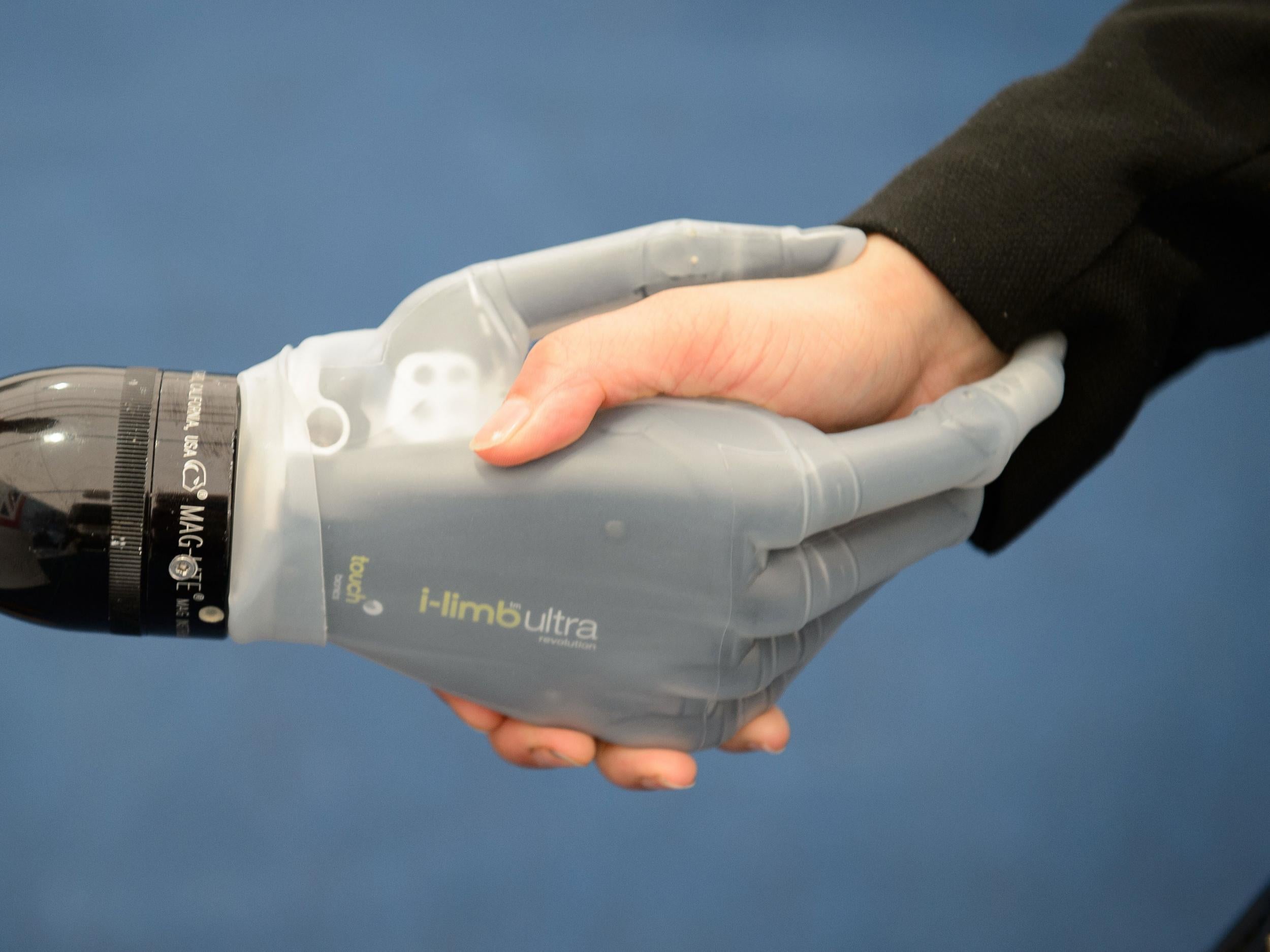Technophobes can relax – there’s no such thing as the fourth industrial revolution
One model estimates that 85 per cent of the economic limit of technology has been reached, projected to reach 95 per cent by 2038

The theme of the 2016 World Economic Forum (“WEF”) in Davos was the “Fourth Industrial Revolution”. Professor Klaus Schwab, WEF’s founder, has even published a hasty, crowd-sourced book. He warns that the scale, speed and impact of new technologies, focused on artificial intelligence, robotics, the Internet of things, autonomous vehicles, 3D printing, blockchains and biotechnology, are “so profound” that in history “there has never been a time of greater promise or potential peril”.
Of course, Davos men and women are confident that the promise will prevail, ushering in a new period of development and prosperity. Over human history, progress in technology has been linked to improvements in living standards. But there are reasons to question whether this new phase of innovation will be as influential as presented.
The Fourth Industrial Revolution follows on from earlier periods of innovation. Economist Robert Gordon defines these phases as follows: the First Industrial Revolution 1 (1750-1830) focused on coal, steam engines, railroads and textiles; the Second Industrial Revolution (1870-1900) entailed developments in electricity, internal combustion engines, modern communications, entertainment, petroleum/hydro-carbons and chemicals; and the Third Industrial Revolution (1960 to the present) has revolved around computing and telecommunications.
The impact of any sustained period of innovation on economic activity depends on: the quantum of the change; the effect on growth and productivity; its longevity, dispersion and long term evolution. Professor Gordon found that the Second Industrial Revolution had the most impact on productivity and living standards. The follow-on period lasted in excess of 100 years, as the full potential of the innovations were realised.
Electricity and the internal combustion engines illustrate the scale of the change. Built upon existing scientific foundations, electricity became commercially viable around 1880. Since then it has been the preferred source of energy, unmatched in terms of conversion efficiency, different fuels, productivity, transportability, precise control of delivery and flexibility. Internal combustion engines allied to availability of oil revolutionised transport and industry. By replacing animals or humans, it increased power, speed, reduced cost, improved efficiency as well as removing the problem of dealing with unsanitary animal waste.
Crucially, the major innovations created large industries, both directly and indirectly. The internal combustion engine allowed the creation of automobiles, which in turn drove development and expansion of the steel, aluminium and rubber industries, supply and distribution of gasoline and oil products, infrastructure for maintenance of vehicles and, most significantly, road systems. These industries were each significant in scale and also created substantial employment opportunities with sufficient wages to drive demand for cars themselves.
The impact is evident by comparing changes in ordinary life between 1870 and 1970, by which time the innovations of the Second Industrial Revolution had been fully exploited, and 1970 to today. A modern individual would recognise the world of 1970 as familiar, though perhaps basic in terms of work, houses, sanitation, energy sources, transport, entertainment and household appliances. In contrast, a 1970 individual would not recognise the primitive world of 1870.
The large-scale changes of the Second Industrial Revolution may have been a one-time event, driving non-repeatable increases in living standards.
The Third Industrial Revolution (1960 to the present) has not been as significant as hoped for. The much-touted Fourth Industrial Revolution is a continuation of the Third. Many elements – Artificial Intelligence, Robotics, biotechnology – are not new.
Techno-optimists dismiss fears about slowing innovation, typecasting non-believers as Luddites. The impact of recent technological changes, they believe, will be realised over time. Techno-optimists believe that progress is near a singularity, the hypothetical moment when artificial intelligence will have progressed to the point of a greater-than-human intelligence with radical implications for human beings and society.
Luddites point to the weaknesses in the technology, such as Big Data, robotics, 3D manufacturing and new wonder drugs.
Big data uses inductive statistics and nonlinear system tools on large data sets to measure and establish relationships, dependencies and identify trends. The technology remains unproven. Its predictive powers are highly variable, reflecting assumptions about data properties that in practice are not well understood.
To date, it has been used mainly in epidemiology, assessing insurance risks or targeted marketing. Big data requires big money, big assumptions and entails big judgemental risks. It has the same problems as all analysis, with more data merely creating new problems rather than providing solutions.
Big data also faces the problem of access to information. Concerns about privacy and security have led to greater use of encryption, which reduces the scope of products and business models which rely on capturing and extracting value from data.
Big data is not new. Its origins are in security and surveillance techniques used extensively by intelligence agencies such as the NSA. Repeated intelligence failures highlight the fact that capturing data is easier then interpreting it. Technology which has the ability to capture exabytes of data rapidly overwhelms analytical capabilities.
Big data resembles Jorge Luis Borges’ Library of Babel, where the world’s entire knowledge is stored. However, not a single word is understood or intelligible in a “labyrinth of letters….[containing] senseless cacophonies, verbal jumbles and incoherences”.
Robotic technology is already extensively used in manufacturing, especially of motor vehicles. Robots designed for healthcare are attracting interest. Despite advances, they remain restricted in terms of power source, locomotion, manipulation and sensory perception, limiting their use for non-routine tasks. Robots have had difficulty completing simple, routine human tasks, such as sorting washing.
First suggested twenty years ago, 3D or additive manufacturing is a process in which successive layers of material are placed under computer control to create three-dimensional objects. It may prove to be a valuable niche product, reducing the cost of manufacturing single or small-run items where there are no economies of scale.
Luddites point to technology as a source of problems. Technologies such as the internal combustion engine and fossil fuels have been highly influential but lie at the heart of environmental damage, which must be dealt with.
The unintended effects of new technology are also problematic. Sophisticated cyber attacks, malware and computer viruses cause chaos, disruption, data or financial loss and personally or politically humiliating public disclosures. The cost of preventing these activities is considerable. Security, trust and privacy are compromised. Bot fraud, where computer programs artificially create page views of online advertising, costs advertisers over $6 billion annually and constitutes up to 25 per cent of hits.
Overuse of antibiotics has increased drug resistant infections, which a 2014 British study found may cause 10 million deaths a year worldwide by 2050. The potential cost is $100 trillion, reducing GDP by 3.5 per cent.
Luddites point to scientific and economic limits to technology. The number of new patents is not commensurate with billions of research dollars. Gains in life expectancy have slowed. Medical advances have disappointed, with cures to many diseases such as cancer proving elusive. Scientists have a saying: nuclear fusion is 30 years away and always be.
One model suggests that the rate of innovation per capita peaked in 1873 and has declined subsequently. It estimates that 85 per cent of the economic limit of technology has been reached, projected to reach 95 per cent by 2038.
Important opportunities for innovation remain; improving crop yields to feed the planet, developing cheap, sustainable sources of energy and electricity storage, treating simple and deadly diseases, conserving scarce commodities and improving logistics to use existing resources efficiently. The current technological focus is with some exceptions not focused on these issues.
In his Theses on the Philosophy of History, Walter Benjamin describes the Turk, a dazzling chess playing machine devised by Baron Wolfgang von Kemplen: “an automaton constructed in such a way that it could play a winning game of chess, answering each move of an opponent with a countermove”. The device featured a puppet in Turkish attire and with a hookah in its mouth sitting before the chessboard. A system of mirrors created the illusion that this table was transparent from all sides. Actually a little hunchback who was an expert chess player sat inside and guided the puppet’s hand by means of strings. Benjamin used the story, which was based on fact, to unveil a historical deception. Rather than a miracle of technology and science, the machine was an elaborate hoax animated by a different force.
Today, the world’s focus on technology and innovation is driven by a desperate desire to find a magical solution to the economic and related social and political problems confronting the human race. While there are many important problems to be solved, and while innovations will continue in many fields, there is an unreasonable expectation that dramatic changes and innovations, at least on the scale of the industrial or early computing revolutions, are on the horizon.
Satyajit Das is a former banker. His latest book is A Banquet of Consequences (published in North America as The Age of Stagnation to avoid confusion as a cookbook). He is also the author of Extreme Money and Traders, Guns & Money.



Join our commenting forum
Join thought-provoking conversations, follow other Independent readers and see their replies